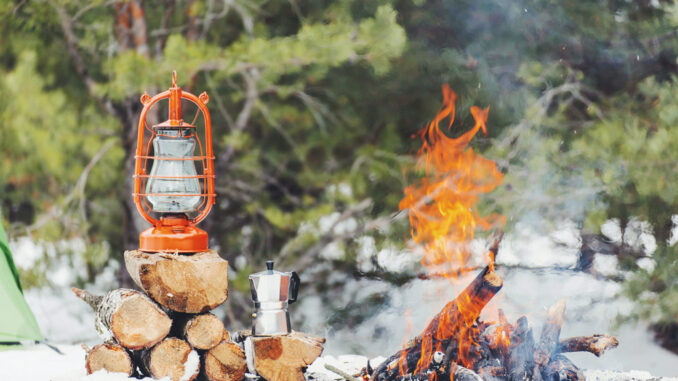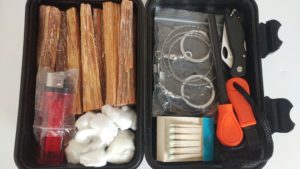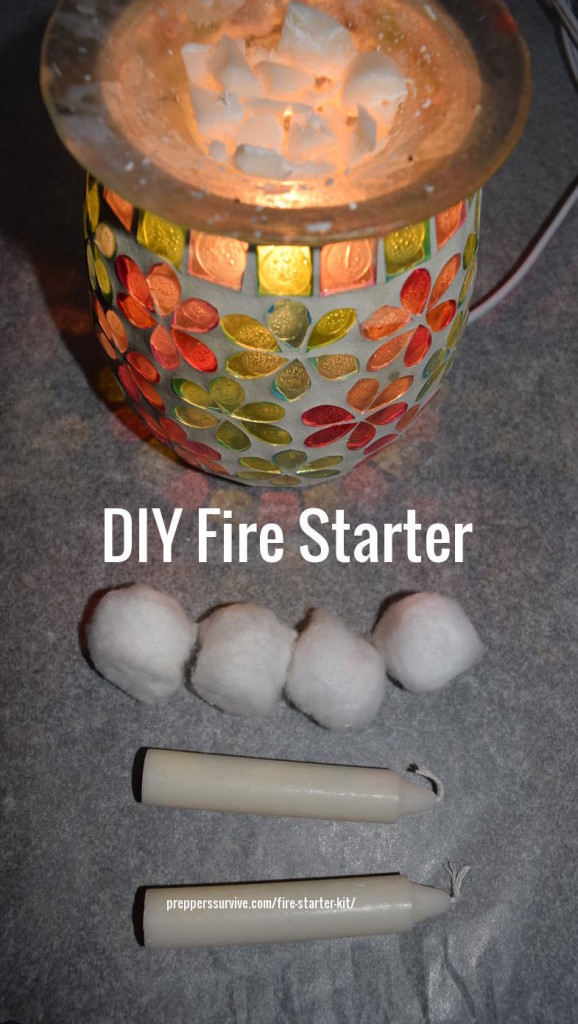

Starting a fire on a dry and sunny day is easy enough, but rain, snow or heavy winds can throw a wrench in your plans. If you’re serious about survival, you must know how to build a fire in bad weather conditions. This guide will teach you how to overcome the elements and get a fire going in any environment.
Get the Best Fire-Starting Tools
A lighter and some kindling won’t be enough to start a fire in adverse weather conditions. You need to acquire fire-starting tools that can tolerate moisture. You also require tools to find and prepare dry firewood — starting a fire without dry fuel is impossible. These are the bare essentials for building a fire in bad weather conditions:
● Ignition sources: You should always bring multiple ignition methods on outdoor adventures. Your best options include a lighter, matches, a Ferrocerium rod or an old-fashioned flint-and-striker kit. The steel wool & battery combination is another viable option.
● Knife: You will need a sharp survival knife to remove wet bark and split fine kindling.
● Folding saw: A compact folding saw will help you cut tree branches into manageable pieces.
● Small hatchet: A hatchet will enable you to chop up small logs and reach the dry wood deep inside. It can also serve as a handy splitting wedge.
● Tarp: Hanging a tarp over your fire pit is the most surefire way to keep the area dry. It’s also an extremely valuable item for a variety of survival situations.
● Cotton balls: Cotton balls serve two purposes. They’re highly flammable, so you can use them as a reliable fire starter if you can’t find any dry kindling. Cotton is also a highly absorbent material that will soak up loose moisture from wet firewood.
● Wax or Vaseline: Soaking the cotton balls in wax or Vaseline will help the flame burn more slowly and give you more time to make the fire bigger.
● Chemical solutions: As a last resort, you can use chemicals like kerosene or magnesium shavings to keep the fire going. However, these methods aren’t eco-friendly and could cause a wildfire. You should only use them when everything else has failed.
Store all these items in a small metal container or waterproof bag to ensure they stay dry. If you encounter bad weather, you can quickly access the tools and get a fire going instead of rummaging through your backpack and wasting precious time. Just one minute can make the difference between life and death in a survival situation.
Find or Build a Dry Shelter
If bad weather rolls through, finding or building a shelter should be your first order of business. Don’t waste your time trying to make a fire while fully exposed to the elements. Even if you don’t need a shelter for sleeping, you still need a rudimentary shelter for your safety. However, starting a fire inside a tent is a terrible idea that could end in disaster. building a fire in bad weather conditions
Start by looking for a flat piece of land with plenty of overhead tree cover. The flat ground will be easier to navigate for dry firewood and the trees will provide a natural canopy. You should also look for these landmarks to protect your campfire from the elements:
● Caves, cliffs and overhangs: These sturdy stone landmarks are the best natural forms of shelter you’ll find in the wilderness.
● Fallen trees: Fallen trees are guaranteed to have some dead or dying firewood. You can also use the tree’s base to block out wind and precipitation.
● Spruce trees: Spruce trees have thick canopies that prevent some precipitation from reaching the forest floor. Their needle leaves and dead lower branches are also excellent kindling.
Settling down in a location with these features will make it much easier to counteract adverse weather conditions and keep your fire dry. You’ll also have a much easier time keeping your supply of firewood dry.
Gather the Firewood
Once you find our build a sufficient shelter for your campfire, you must start gathering firewood immediately. The longer you wait, the more difficult it will be to find dry wood in rain or snow. Avoid working in the dark and get the fire going before nightfall. Daylight is one of your greatest resources in a survival situation.
Some types of firewood are better than others. Dead and dying wood is always preferable because it contains minimal moisture. Peeling bark is a good sign a tree has died. You can also test the wood’s dryness by cutting a chip from deep in the trunk and feeling for moisture.
Unfortunately, finding dry firewood in the middle of the rain is almost impossible. You won’t locate anything useful on the forest floor. However, you might have a better chance in a snowstorm if you can construct a shelter quickly and head out as soon as possible.
Getting your firewood from tree branches that haven’t touched the wet ground is better. The following tree species will give you the best chance of finding burnable firewood during bad weather:
● Spruce
● Oak
● Birch
● Hickory
● Maple
● White Ash
● Black Locust
You won’t have time to let the wood completely dry out, but you can remove some moisture by stripping the bark, stacking the wood and covering the top of the pile. Remember to expose the wood’s sides so water can drip and evaporate off the stack.
Prepare the Firewood
Throwing a bunch of sticks onto a disorganized pile might work on a dry, sunny day, but you need to be more tactical when bad weather comes into play. Separate the wood into three different piles so you can slowly build a fire after igniting the first flame:
● Small: Scour the forest floor for dry twigs, leaves, undergrowth and any other small dry materials that might hold a flame.
● Medium: Cut tree branches to roughly one foot long and peel off wet bark.
● Large: Use your hatchet, saw and knife to make a few decent-sized logs.
Always remember to keep your supply dry as you prepare each pile. All these preparations should take place under your tarp or survival shelter.
Build a Strong Foundation
Now it’s finally time to start the fire. Dig a small hole in the ground to block out the wind and keep your pile of kindling dry. Keep the other two woodpiles close so you can easily add more wood once the flame catches.
For rainy or windy weather, the best option for your fire’s foundation is the traditional log cabin style. The log cabin is more stable than other formations and will help you use the strong winds to your advantage. Providing a consistent oxygen supply is the key to keeping the flame alive.
Follow these steps to build an intense log cabin-style fire:
- Lay two medium-sized sticks on the ground about six inches apart. These sticks will serve as the base.
- Put four pencil-thin sticks over the base.
- Pile some kindling and cotton balls on the support sticks.
- Lay another two medium-sized sticks over the kindling and cotton balls.
- Put another pile of kindling and cotton balls over the top two sticks.
- Add a final layer of pencil-thin sticks over the top layer of kindling.
- Adjust the spacing of the sticks to create sufficient airflow.
Light the initial flame on the second layer of kindling, not the first. The slightly elevated fire will benefit from better airflow and produce less smoke, improving your chances of keeping it going. Use your hands and body to shield the flame from precipitation. Add more kindling and cotton balls if the flame starts to die out.
Once you get a sizable flame, add bigger sticks one by one. Don’t be too hasty with this step — you don’t want to smother the fire. Let the fire grow at its own pace and add fresh wood to the top of the cabin structure when necessary.
Start a Fire in Any Environment
Starting a fire is much easier said than done. You won’t appreciate the challenge of building a fire in bad weather conditions until you experience it firsthand. However, you can learn the best survival procedures for every environment by following this guide for gathering, preparing and starting a fire.
Author Bio
Jack Shaw has been writing on men’s interests for over five years, serving as the senior writer and editor for Modded. He enjoys hiking, exploring, and camping — even in the snow. He’s an avid survivalist has written for publications such as Crow Survival, Outdoor Hacker, and Undiscovered Mountains.
Thanks for visiting Preppers Survive. Before you leave, subscribe to our newsletter. If you enjoyed this article, Building a Fire in Bad Weather Conditions, please share it on your favorite social media.



















